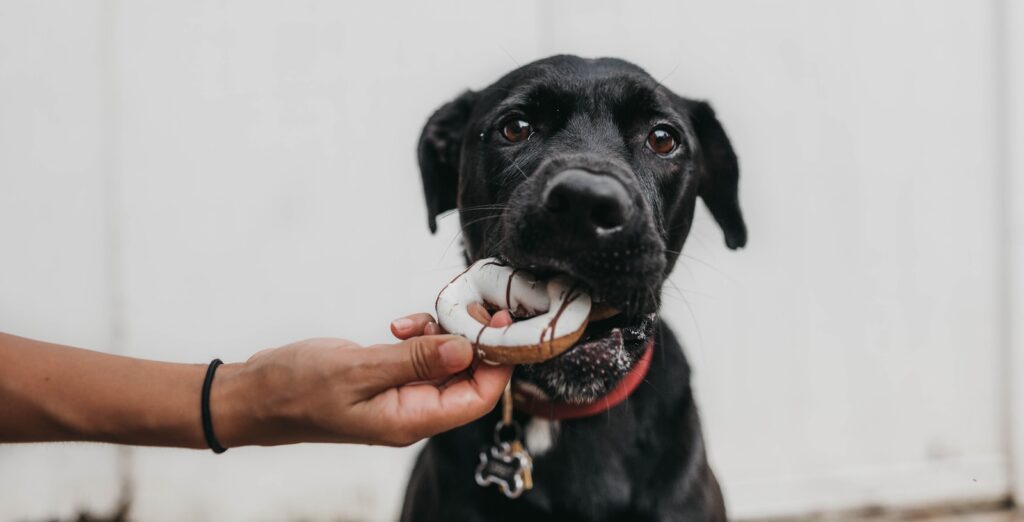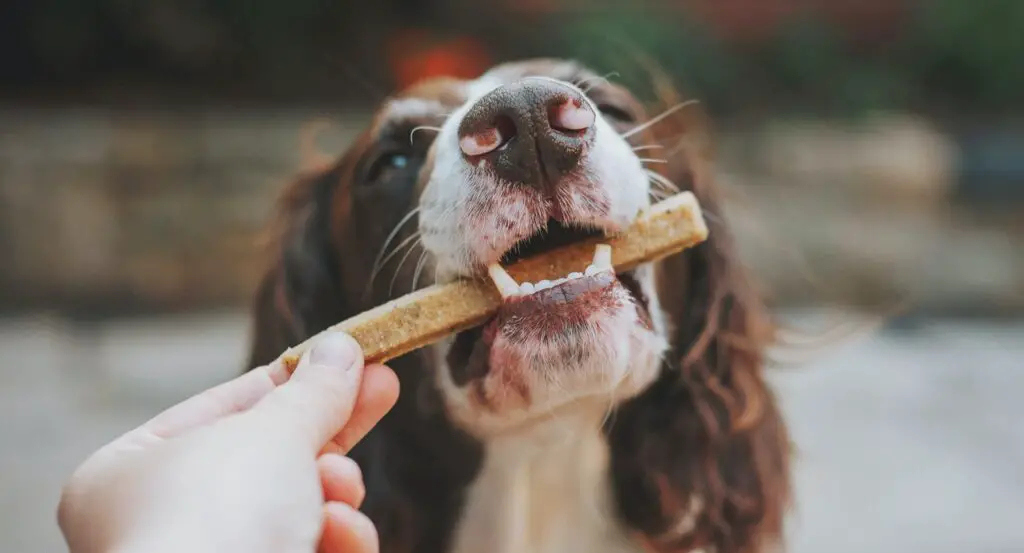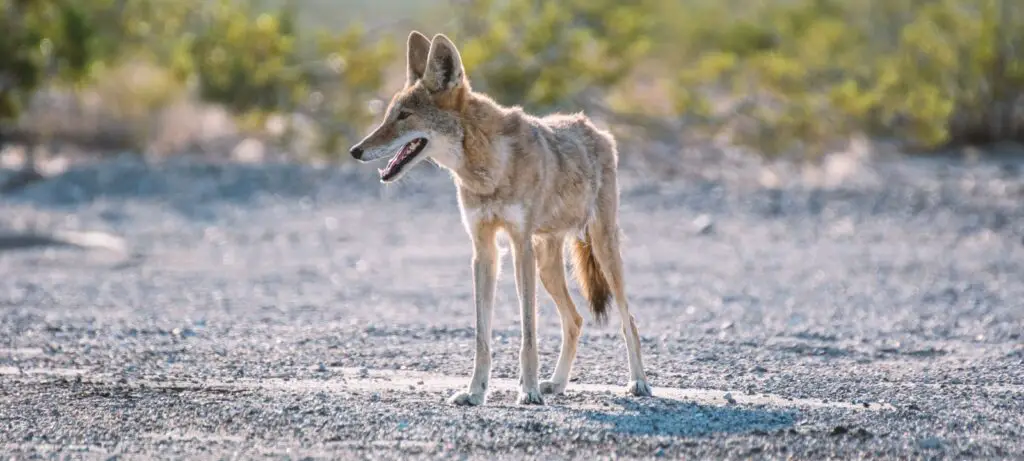What Can I Feed My Dog With High Liver Enzymes

Key points
- Puppies should eat a well-balanced and complete diet suitable for their age, weight, and breed. The formulas for large and small breeds are different, and there are varying dietary recommendations for each breed. You should consult your dog's veterinarian or breeder when choosing a diet.
- You should switch your puppy to adult food when it reaches 6-12 months of age. This is usually done after spaying or neutering the pet.
- Use a growth-and-weight chart or consult a veterinarian to determine how much food you should give your dog. Pet owners tend to overfeed their puppies which will only harm your dog.
- Some of the foods that you can't give puppies and adult dogs include chocolate, garlic, onions, almonds, ice cream, raisins, grapes, and alcohol.
Feeding a puppy can be very overwhelming, especially if you are a first-time pet owner. A healthy and well-formulated diet can increase your puppy's life expectancy, minimize the risk of many health issues, and generally keep your dog happy and active. Nowadays, most dog food is processed, but it only improves the formula and the quality of the product. But with all the variety of options that the market offers, how can we know which food to choose for a puppy and how to feed it?

Choosing dog food is indeed a time-consuming and challenging process, and it's better to consult a veterinarian if you're not sure what your puppy needs or have other questions about your dog's feeding regimen. You can find a general puppy feeding guide below, which hopefully will give you a better understanding of how to feed your puppy.
Feeding a Puppy During the First Year of Its Life
6–12 weeks:
During the first months of a puppy's life, it's essential to follow a specifically formulated diet to fulfill all the nutritional needs of your new dog. Don't give your puppy adult food because it won't have all the nutrients that the pet needs. During this life stage, you should feed your puppy four times a day. Large dog breeds can start eating unmoistened dry food when they reach 9 or 10 weeks, and small breeds can make the switch at 12 or 13 weeks.
3–6 months:
At this time, puppies usually lose their potbelly and pudginess. After your dog passes the 3-month mark, you should start feeding it 3 times a day rather than 4. If your pup looks chubby after 12 weeks, just keep feeding it puppy-sized portions until it matures in appearance.
6–12 months:
This is the time to start giving your dog two meals a day. If you spay or neuter your dog, it may decrease its energy requirements, so it's advisable to switch to adult food after the procedure. If you own a small breed dog, you can start administering adult food at 7 to 9 months. For bigger breeds, the switch should be made at 12 to 14 months. However, you shouldn't rush to transition your dog to adult food. It's always better to feed your pet puppy food longer, as switching to adult food too early can cause your pet to experience an overload of nutrients which may be harmful for your pup.
After 1 year:
As dogs turn one year old, most owners start feeding their pets two half-portions a day.
What Should I Feed My Puppy?
There are many things that go into determining your dog's food regimen, but the most important include breed size, the type of diet you choose, and the dog's age. We've gone over the general dietary recommendations for the first year of a puppy's life in the previous section. Now, let's take a look at other factors you will need to take into account when feeding your new puppy.
Proper Nutrition
It's crucially important for dog owners to ensure that their dogs eat a high-quality, well-balanced diet with rich nutritional content. It's also advisable to choose high-protein formulas, as puppies need protein for their healthy development and growth.
Different Formulas For Large And Small Breeds
Whether you have a large or small dog, its diet should be balanced, complete, and approved by a veterinarian. You may have noticed that pet food stores carry a selection of dog food options for breeds of different sizes. The difference between formulas for larger breeds and smaller breeds lies in the unique needs of these dogs. For example, larger breeds are more predisposed to different joint problems, so their diet should contain more protein, fats, and other necessary nutrients.
Dry or Wet Dog Food: Which One To Choose?
Most dog owners tend to choose dry kibble, however, you can also consider feeding your pet wet food. There isn't any difference between these two formulas as long as the diet is well-balanced. It's mostly a matter of your dog's preference, and you can even combine the two types of food.
However, if you decide to combine dry and wet dog food, make sure the total calorie value doesn't exceed or recede the standard daily requirements for your dog's weight. Check the labels for calorie content so you have a clear understanding of how much dry food you can replace with wet food and vice versa. It's also essential to observe the way your puppy's body is developing to understand whether you should adjust the amount of calories you are giving the pet.
Wheat And Grain-Free Food For Puppies
Many dog food brands offer grain-free options, usually at a premium. But is grain-free dog food really better? Nowadays, dogs digest grains more easily than their ancestors, so dog food that contains grains generally doesn't cause any problems. However, some dogs can't tolerate grains, in which case you will likely need to feed the pet specialized grain-free food. Grain-free diets work just as well as other types of food, so you can confidently switch your pup to these formulas if a vet recommends it.
Insect Protein For Puppies
Your puppy's diet should contain about 30% proteins to ensure its healthy development. Proteins are responsible for healthy hair and skin, muscle, tooth, and bone development, and tissue repair. In addition, insect-based protein is an environmentally-friendly alternative to conventional pet food. For instance, The British Veterinary Association (BVA) has stated that some insect-based foods may be better for pets than traditional meat diets.
Insect based protein has many health benefits for dogs:
- Insects are an excellent source of protein. Food made from insects meets all dietary requirements of young dogs. It is also rich in amino acids, Omega-3, Omega-6, and essential fatty acids.
- Insect-based protein is more gentle on a canine's digestive system, making it perfect for dogs with sensitive stomachs.
- This type of protein is hypoallergenic both for dogs and cats, which eliminates the risks of unpleasant allergic reactions to conventional meats (which are, by the way, the most common allergens).
It's also more sustainable and eco-friendly, which makes it a great alternative to conventional meats.
How Much Should I Feed A Puppy?
Once you've chosen the perfect diet for your pup, you need to figure out how much you should feed it. As soon as a dog reaches about 6 weeks of age, it should start consuming a complete puppy diet. It's vital to adjust portion size as your pet grows, as the more your dog weighs, the more food it'll need. Here are some tips for determining how much food to feed your puppy:
- You can find growth-and-weight charts for puppies or ask your veterinarian how much food your pup should consume.
- Monitor your puppy's weight weekly using breed-appropriate weight charts. But don't panic if your dog is an ounce or two over or underweight for its age since all puppies develop differently.
- If you don't know how to weigh puppies properly, here's a helpful tip: weigh yourself using a bathroom scale and record the weight, then weigh yourself again holding your puppy and calculate the difference.
- It's important to find a golden medium and stick to it. Don't assume that by feeding your dog more food, you'll provide it with more nutrients. Obesity puts puppies at the risk of orthopedics problems, diabetes, and heart issues.
Puppy Obesity

Puppies generally tend to overeat rather than not eat enough, which is why you should determine the appropriate daily amount of calories for your dog and stick to it. Eating too much or too quickly can result in many secondary health problems besides obesity. In addition to sticking to a strict diet, you should also make sure your dog gets enough exercise to keep its body strong and muscles toned.
Puppy obesity can cause other issues, including arthritis, liver disease, respiratory problems, hypertension, heat intolerance, lowered immune system, and increased risk of tumors. All of these decrease your puppy's life expectancy and reduce its quality of life. If you're wondering when you should start getting concerned about your pup being overweight, here are some common signs of obesity:
- A dog's ribs and spine are rather hard to feel;
- You can't feel the dog's ribs when placing your hands on your puppy's sides;
- Your dog doesn't have a clearly defined waist when you look at it from above, and its body has an oval shape;
- This is rare for young dogs, but you may also notice excess fat around the dog's hips and neck.
Giving Treats To Your Puppy
The good news is that you can definitely include treats in your puppy's diet. For example, you can use them as a reward when training your dog. However, don't forget to follow the 90/10 rule, meaning that only 10% of your dog's daily caloric intake should come from treats, and the other 90% should come from a balanced puppy diet. Don't let your dog guilt you into giving it more treats since overfeeding can result in many health-related issues in the future. If you give in, you will not only disrupt your dog's regular diet but also promote unwanted behaviors.

Tips For Feeding A Puppy
- Don't feed your puppy as soon as you come home since it can result in puppy separation anxiety. If you want to show affection, playing or grooming are better options.
- If your puppy suffers from kidney disease, heart disease, diabetes, or other health conditions, you can feed it specially formulated food prescribed by your pet's veterinarian.
- Don't overdo it with vitamins and dietary supplements since it may harm your puppy.
- Consult with your veterinarian or breeder about a proper diet for your puppy, and don't make any rapid or significant changes because they can result in digestion problems.
If you're looking for healthy snacks for your dog, try giving it carrot or apple chunks. - Let your dog have access to fresh water at all times and wash the water bowl every day so that bacteria doesn't build up there.
- Make sure you keep all food fresh, especially if you feed your puppy a wet or moistened diet, because this food can go moldy very quickly.
- Don't give your dog poultry, pork bones, or any other cooked bones because they are a serious choking hazard. They also can block the intestines when chewed up into small pieces. Use different chew toys to fulfill your puppy's craving to chew.
What Can't I Give My Puppy?
If you are a first-time dog owner, you should be aware of the products that are extremely dangerous and toxic to dogs. Avoid giving these foods to your puppy, and don't leave them within the area of its reach. Here's a list of the most common products that dogs can't eat:
- Chocolate
- Onions
- Garlic
- Ice cream
- Almonds
- Macadamia nuts
- Raisins and grapes
- Avocados
- Cinnamon
- Alcohol
- Heavily salted or sweetened food
What Should I Do If My Dog Doesn't Eat?
If you notice that your puppy has started to eat less, or worse – stopped eating altogether, it can indicate a severe health issue. In this situation, the best thing to do is to take your puppy for a comprehensive examination with a vet. If your puppy has any health issues, you may also notice lethargy and behavioral changes in addition to a lack of appetite.
If, however, there are no health problems, then the dog's environment could be the issue. For example, some dogs don't like to eat with people around them, so try to keep your pet's eating area relatively quiet. Alternatively, you can consider switching to another type of protein or diet in general. When changing your dog to a new diet, you will need to slowly introduce a new food into your pet's diet while phasing out the old one.

If your puppy doesn't eat enough food, it can develop anorexia. This condition can lead to many other health disorders such as stunted growth, brittle and weak bones, and a compromised immune system. Usually, anorexia in dogs is caused either by hormonal imbalance or psychological issues. The most clear signs of a dog being underweight are its ribs that you can prominently see through the skin. Your dog's veterinarian will establish a treatment plan and recommend an appropriate diet. Curing anorexia in dogs is more complicated than dealing with obesity, but you can fix this problem with consistency and commitment.
FAQ
How much dry food should I feed my puppy?
Vets generally recommend feeding a puppy 20g of food per 1kg of body weight.
How do I know if I'm feeding my puppy enough?
If you can feel the puppy's ribs, but they are not prominent and visible, it means that your puppy is healthy and eats just the right amount of food.
Can you overfeed a puppy?
Yes, it's very easy to overfeed a small dog, and they tend to eat and snack even when they are not hungry. That's why it's essential to know the recommended calorie intake for your puppy and stick to it.
Should I feed my puppy wet or dry food?
Both diets are excellent for puppies as long as they are correctly formulated and include all the nutrients your puppy needs. You can also mix dry and wet dog food, but remember to monitor the number of calories your dog consumes.
What Can I Feed My Dog With High Liver Enzymes
Source: https://gopetcan.com/feeding-puppies-guide/
0 Response to "What Can I Feed My Dog With High Liver Enzymes"
Post a Comment